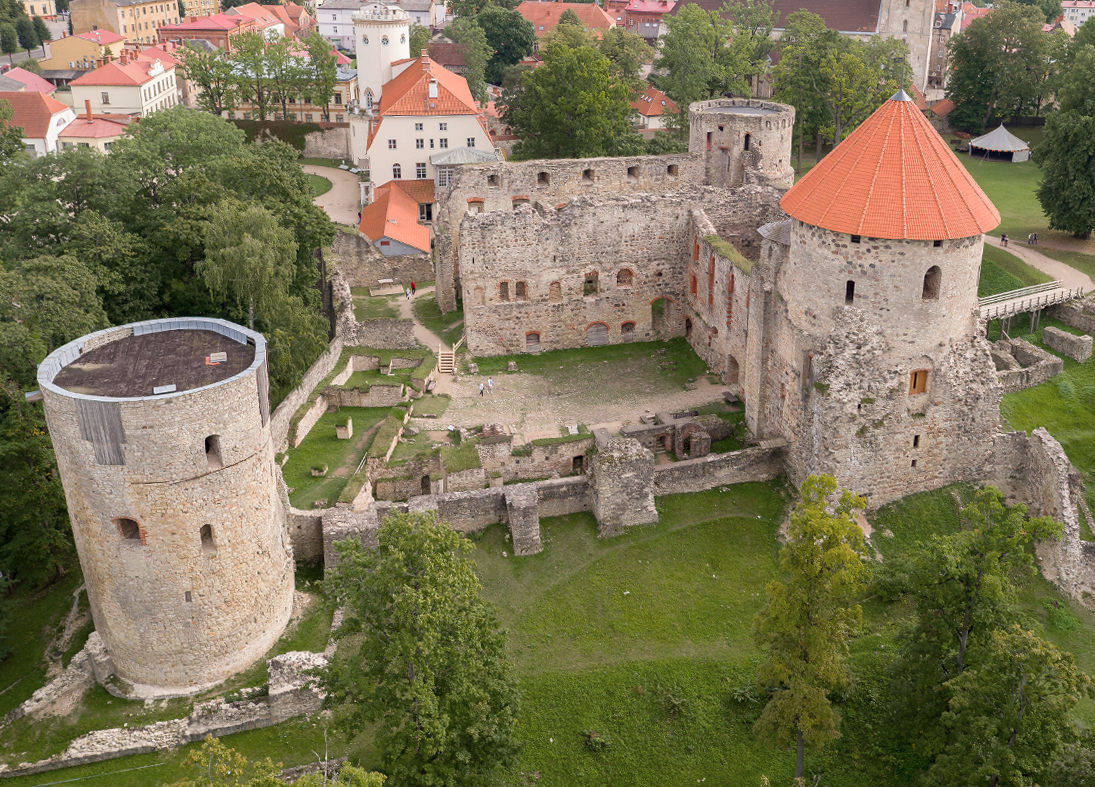Siege Of Cēsis Castle (1577) on:
[Wikipedia]
[Google]
[Amazon]
The siege of Cēsis Castle (1577) was a part of Ivan the Terrible's campaign to conquer Old Livonia. After a five-day-long bombardment, about 300 people within the castle committed mass suicide by blowing themselves up with four barrels of gunpowder. The event is regarded as one of the greatest tragedies in the war-torn Europe of the early modern period.

Background
After the dissolution of the Livonian branch of theTeutonic Order
The Teutonic Order is a religious order (Catholic), Catholic religious institution founded as a military order (religious society), military society in Acre, Israel, Acre, Kingdom of Jerusalem. The Order of Brothers of the German House of Sa ...
in 1561, Cēsis Castle
Cēsis Castle () is one of the most iconic and best preserved medieval castles in Latvia. The foundations of the castle were laid 800 years ago by the Livonian Brothers of the Sword. The most prosperous period Cēsis Castle experienced was durin ...
, one of the region's most important fortresses, was garrisoned by Polish troops. In the summer of 1577, the townsmen of Cēsis drove the Polish garrison from the castle and submitted to Magnus
Magnus, meaning "Great" in Latin, was used as cognomen of Gnaeus Pompeius Magnus in the first century BC. The best-known use of the name during the Roman Empire is for the fourth-century Western Roman Emperor Magnus Maximus. The name gained wid ...
, the titular King of Livonia. Soon after Magnus have moved to Cēsis the Muscovites, personally led by Ivan the Terrible, arrived at the edge of the town. The tsar had a reputation for not sparing even those who willingly surrendered, and therefore the decision was made not to open the gates. According to Salomon Henning the bombardment of the castle was ordered to be opened with full force when a shot came flying from the castle and whizzed right by the tsar's head.
Siege and explosion
The Muscovites were thousands strong, armed with heavy artillery, while the castle was occupied by a few hundred people, according to Laurentius Müller, mostly women and children. They had sought safety and protection inside the castle, knowing of the Muscovite ruler's pathological cruelty towards captives. Salomon Henning wrote that abject despair and utter hopelessness arose among the defenders of the castle:
Whenever someone, standing in a window for example, was struck and killed by a shot from the heavy artillery, another would take his place as soon as he had been dragged away, hoping to meet his own end in the same fashion.The castle was severely damaged by the five-days-long shelling – cracks and holes in the thick walls grew larger and larger. Cēsis Castle was doomed but people who had sought shelter behind its walls were ready to do anything to avoid being taken prisoners by the ruthless invaders. Thus they decided to take an extreme measure: to blow themselves up with gunpowder. Documentary and archaeological evidence point out that the first-floor hall of the western range was chosen as the location for the suicide. Salomon Henning's ''Chronicle of Livonia and Courland'' gives the most touching description of the mass suicide:
One should have seen this sorrow beyond all sorrow as the good people knelt in the room beneath which the gunpowder had been placed. Man and wife held each others' hands, children gathered around their parents, some still nursing at their mothers' breasts, all awaiting blessed St. Simeon's hour. Nor, as the Muscovite soon hereafter began to storm and invade the castle, was it long delayed. The gunpowder was ignited and all were blown up, aside from those who had hidden elsewhere in the castle...
References
{{DEFAULTSORT:Cēsis Castle 1577 Conflicts in 1577 Battles of the Livonian War 16th-century sieges Siege 1577 Attacks on castles Residential building bombings in Europe Mass suicides Suicide bombings in Europe Suicides in Latvia Ivan the Terrible Suicide by explosive material Sieges involving the Tsardom of Russia